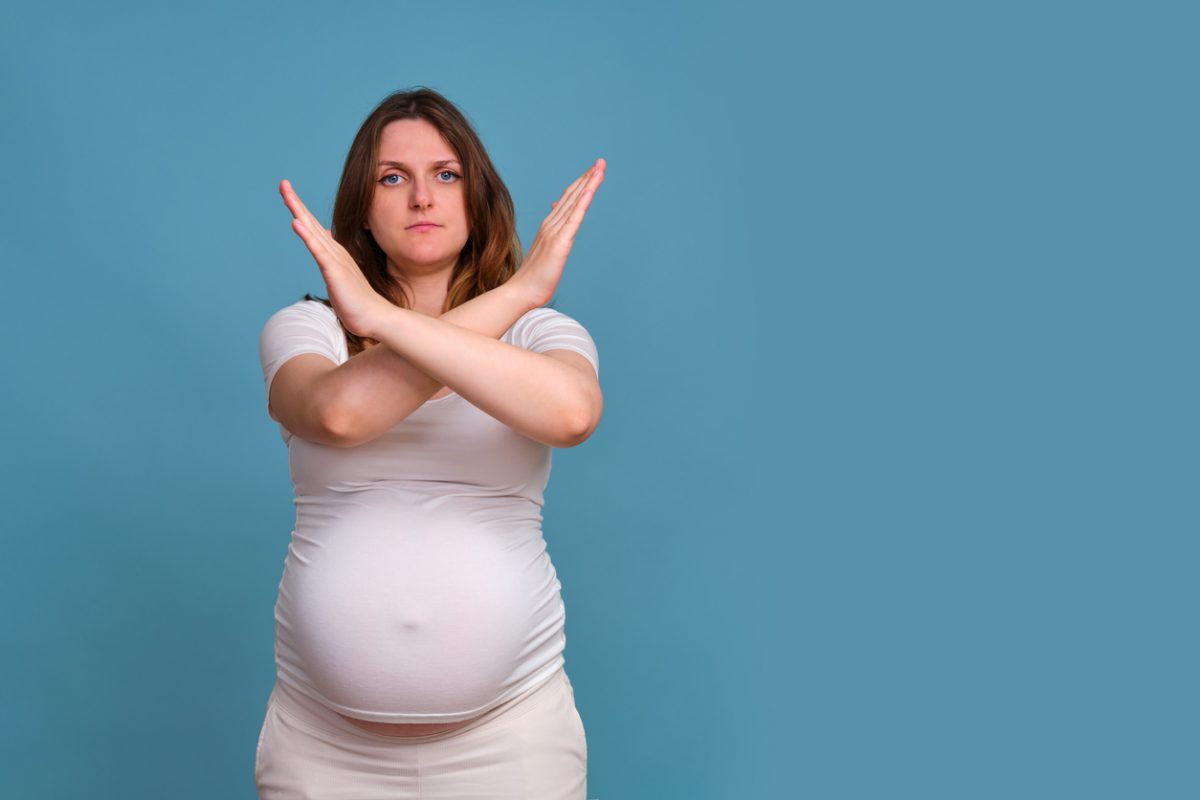![]()
J Clin Psychiatry 2022;83(5):22ed14399
To cite: Freeman MP, Goldberg JF. The pursuit to recognize bipolar disorder in pregnant and postpartum women. J Clin Psychiatry. 2022;83(5):22ed14399.
To share: https://doi.org/10.4088/JCP.22ed14399
© 2022 Physicians Postgraduate Press, Inc.
aMassachusetts General Hospital and Harvard Medical School, Boston, Massachusetts
bDepartment of Psychiatry, Icahn School of Medicine at Mount Sinai, New York, New York
*Corresponding author: Marlene P. Freeman, MD, Massachusetts General Hospital, 55 Fruit St, Boston, MA 02114 ([email protected]).
See article by Masters et al
The perinatal period has received much attention as an opportune time to screen for depression. Broadened perinatal screening programs for depression and other mood disorders may be especially critical to improving psychiatric outcomes, particularly given the high prevalence of mood disorders during reproductive years, the risks of untreated mood disorders to both women and their children, and the opportunity for screening through frequent contact with health care providers during obstetrical monitoring appointments. The postpartum specifically has long been recognized as a time of heightened risk for severe mood or psychotic episodes. However, the research on perinatal (unipolar) major depressive disorder (MDD) has outpaced that on other disorders, including bipolar disorder. A more nuanced approach to screening may be warranted.
Common practices of screening for postpartum depression without simultaneously assessing for histories of mania or hypomania may drive the misrecognition of postpartum depression as unipolar rather than bipolar disorder. Landmark studies by Kendell et al1 found a markedly higher risk for postpartum psychosis among women with bipolar disorder than among those with major depression or schizophrenia, although less is known about the prevalence of peripartum or postpartum depression in unipolar versus bipolar disorder. The article by Masters et al2 in this issue sheds much-needed light on the prevalence of peripartum bipolar disorder. Not only do they remind us that pregnancy can be associated with mood episodes in at-risk persons, but, moreover, their work prompts broader concerns about diagnostic accuracy and possible underrecognized antepartum/postpartum bipolar disorder, the differentiation of clinically significant from possibly benign signs of hypomania during or after pregnancy, and consideration of proper treatment for peripartum bipolar mood symptoms.
A striking finding from this review was that while only 2.6% of the pooled study group had an identified history of bipolar disorder pre-pregnancy, 20.1% manifested signs of bipolar depression, hypomania, or mood episodes with mixed features during pregnancy or postpartum. Does this then mean that the peripartum period confers about a 7-fold increased risk for precipitating a first lifetime presentation of bipolar disorder? Or, that an astonishingly high 1 in 5 depressed pregnant or postpartum women may actually manifest signs of bipolar disorder? Or, that the vast majority of women with preexisting bipolar disorder may have gone unrecognized or altogether undiagnosed prior to pregnancy and delivery? No comparative sample of pregnant/postpartum MDD patients is available from which to draw inferences about the relative risk for peripartum depression in unipolar versus bipolar patients, but such a study is needed before one can make claims about relative risk.
There are two main concerns that are paramount to the accurate diagnosis of bipolar disorder in individuals with depression. One is that bipolar disorder may be missed despite the occurrence of mania/hypomania, and the other is that diagnoses evolve, and what may start as unipolar MDD may actually represent bipolar disorder that has not yet declared itself.
Consider the issue of identifying true casehood and diagnostic rigor when ascertaining bipolar disorder. While bipolar disorder is often misrecognized as major depression, it still constitutes the vast minority of mood disorders, with a lifetime prevalence of 1% for bipolar I disorder and 1.1% for bipolar II disorder, plus an additional 2.4% for subthreshold or “spectrum” manifestations of bipolar disorder.3 By contrast, MDD carries a lifetime prevalence of 20.6% as found in large-scale epidemiologic studies.4 In the review by Masters et al,2 nearly one-third of the study group were identified as having bipolar disorder not by formal assessment interviews but by self-administered screening with the Mood Disorders Questionnaire (MDQ). While screening tools are useful for capturing at-risk populations, they are not synonymous with formal diagnoses. They are designed to be overinclusive and are especially valuable when screens show high negative predictive value (that is, ruling out clear non-cases). However, the MDQ has variable positive predictive value (PPV; that is, capturing bipolar cases and discarding false-positives) depending on the study group being assessed. For example, Zimmerman and Galione5 found that the MDQ had fairly low PPV when administered in the general population (43.1%) and showed lower sensitivity for accurately detecting cases of bipolar II disorder (38.6%) than for detecting bipolar I disorder (66.3%). Masters et al found that among studies using only the MDQ as a diagnostic proxy, new-onset prevalence rates of possible bipolar disorder ranged from 3.3% to 25.6%. For the sake of perspective, Hirschfeld et al6 found a screen-positivity rate of 3.4% from a household mass-mailing survey involving 85,358 respondents. Conflating screen positivity with formal face-to-face assessments incurs risks for possible overdiagnosing of bipolar disorder.
Adding to potential diagnostic confusion in studies such as this is the DSM-5 construct of MDD with mixed features. As the nosology of mood disorders moves toward favoring the model of a “continuum” rather than a categorical taxonomy across polarities of depression and mania, the presence of subthreshold manic or hypomanic symptoms in syndromally depressed patients does not necessarily signal the presence of bipolar disorder. (Indeed, only about 20% of MDD patients with subthreshold mania will fully meet diagnostic criteria for a manic or hypomanic episode in the course of long-term follow-up7). Postpartum manic episodes have been reported as more likely to be mixed,8 although little is known about whether postpartum syndromal depression more often involves pure depressed phased or mixed features, in either bipolar or unipolar disorder.
A corollary consideration involves the possibility that some subthreshold hypomanic symptoms during the postpartum period could reflect a transient, nonpathologic hypomanic counterpart to the “baby blues”—distinguishable from the diagnosis of a major mood disorder with implications for recurrence. This is an interesting concept that has previously been raised in the literature9 but not extensively documented with empirical observation. Glover et al10 observed that about 10% of women experience low-grade hypomania symptoms in the first week postpartum and found a subgroup to be more likely to experience postpartum depression 6 weeks later as compared to those with no hypomania symptoms. Further studies are needed to identify the extent and prevalence of such as hypothesized “postpartum highs” as distinct from hypomania in the context of possible bipolar disorder.
One wishes for finer granularity to identify which pregnant cases may have especially high risk for peripartum mood episodes, particularly in patients with no psychiatric history. The original work on postpartum psychosis by Kendell et al1 found a higher incidence of new-onset cases in primiparous than in multiparous women—a covariate not captured by Masters et al in their review. After a psychiatrically uneventful first pregnancy and postpartum, what is the conditional probability that a subsequent pregnancy could lead to a first lifetime manic or mixed episode? And, does peripartum new-onset risk further stratify by age, given that the risk for new-onset bipolar disorder peaks in young adulthood and then declines? How much does a family history of documented bipolar disorder in a first-degree relative further shape individual risk?
An unfortunate and important limitation of the present naturalistic study is that the authors were unable to more fully address the role of pharmacotherapy in their study population. Given their remarkable finding that a mood episode occurs during pregnancy or the postpartum in over half of pregnant/postpartum individuals with suspected bipolar disorder, it would be important to differentiate how much that reflects treated versus untreated conditions. Of equal importance is the concern that pregnant persons with a bipolar diathesis who are misidentified with major depression may be prescribed monoaminergic antidepressants—which, as a class, have never shown greater efficacy than placebo in treating bipolar depression. The related concern for antidepressants to induce or exacerbate mania or hypomania remains a controversial and unresolved topic. Importantly, convergent lines of evidence suggest that this risk—pertaining overall to about 10%–15% of individuals with bipolar disorder according to prospective studies11—may be greater in certain patient subtypes, such as those with bipolar I versus bipolar II disorder,12 those with subthreshold mania symptoms or mixed features,13 or those with a previous history of antidepressant-associated mania.14 It is unknown if pregnancy itself confers an increased risk for mood destabilization with monoaminergic antidepressants, a key question for which future studies are needed.
Finally, it is worth noting that bipolar disorder with postpartum onset of a depressive episode may possibly have a more favorable longitudinal course than when bipolar disorder begins at other times of life.8,15 It is certainly possible that, just by definition, women with onset postpartum, during the reproductive years, would have a more favorable course than those with an onset during childhood or adolescence, as early onset predicts a more recurrent or severe course of illness.16 Or, perhaps, there may be multiple variables that lower the threshold for the expression of bipolar mood episodes in the postpartum that might not otherwise emerge.
Clearly, the relatively high rates of positive screens for hypomania during pregnancy and the postpartum raise many questions. Investigators in the field must seek to better understand the diagnostic and treatment implications. In the United States, the implementation of screening programs for perinatal depression has led to universal depression screening in a way not typically seen outside of the obstetrical setting. The limitations of depression screening include lack of focus on other disorders, including bipolar disorder, and the lack of more precise diagnostic assessments in many cases. In addition, the context may complicate understanding of the phenomenology of psychiatric disorders. This is especially true when symptoms present in the acute postpartum, when variables of hormonal fluctuations, sleep deprivation, and other factors may precipitate symptoms that can be challenging to categorize in our diagnostic system. Postpartum psychosis and the “postpartum blues” are examples of unique postpartum phenomenology that remain poorly understood when they occur in a circumscribed manner without a preexisting history of psychiatric disorders. At this time, positive screens for hypomania among pregnant and postpartum women should alert the clinician to the possibility of bipolar disorder, yet with these caveats. While laudable strides have been made in screening pregnant and postpartum women for depression, these efforts can be built upon to screen and diagnose with greater accuracy, with an ultimate goal of understanding the longer-term outcomes.
Published online: July 13, 2022.
Relevant financial relationships: Dr Freeman has received research support (in the past 36 months) for investigator-initiated trials from JayMac and Sage. Dr Freeman is an employee of Massachusetts General Hospital (MGH) and works with the MGH National Pregnancy Registry. Current sponsors of the MGH National Pregnancy Registry are Alkermes, Inc. (2016–present); Aurobindo Pharma (2020–present); AuroMedics Pharma LLC (2021–present); Johnson & Johnson/Janssen Pharmaceuticals, Inc (2019–present); Otsuka America Pharmaceutical, Inc. (2008–present); Sage Therapeutics (2019–present); Sunovion Pharmaceuticals, Inc. (2011–present); Supernus Pharmaceuticals (2021–present); Teva Pharmaceutical Industries Ltd. (2018–present); past sponsors were Forest/Actavis/Allergan (2016–2018, declined to sponsor: 2018–present), AstraZeneca Pharmaceuticals (2009–2014, declined to sponsor: 2014–present); Ortho-McNeil–Janssen Pharmaceuticals, Inc (2009–2014, declined to sponsor: 2015–present); Pfizer Inc (2009–2011, declined to sponsor 2012–present). As an employee of MGH, Dr Freeman works with the MGH CTNI, which has had research funding from multiple pharmaceutical companies and the National Institute of Mental Health (NIMH). She has served on Independent Data Safety and Monitoring Committees for Janssen (Johnson & Johnson), Novartis, and Neurocrine and on Advisory Boards for Eliem and Sage. She has participated in educational activities (speaking, planning) for WebMD, Medscape, Pri-Med, and Postpartum Support International. She has received scale royalties, through MGH, for The Massachusetts General Hospital Female Reproductive Lifecycle and Hormones Questionnaire (Freeman et al 2013). Dr Goldberg has been a consultant for BioXcel, Jazz Pharmaceuticals, Otsuka, Sage Pharmaceuticals, Sunovion, and Supernus; has been on the speakers bureau for Abbvie, Alkermes, Intracellular Therapies, and Sunovion; and has received royalties from American Psychiatric Publishing and Cambridge University Press.
Funding/support: None.
References (16)

- Kendell RE, Chalmers JC, Platz C. Epidemiology of puerperal psychoses. Br J Psychiatry. 1987;150(5):662–673. PubMed CrossRef
- Masters G, Hugunin J, Xu L, et al. Prevalence of bipolar disorder in perinatal women: a systematic review and meta-analysis. J Clin Psychiatry. 2022;83(5):21r14045.
- Merikangas KR, Akiskal HS, Angst J, et al. Lifetime and 12-month prevalence of bipolar spectrum disorder in the National Comorbidity Survey replication. Arch Gen Psychiatry. 2007;64(5):543–552. PubMed CrossRef
- Hasin DS, Sarvet AL, Meyers JL, et al. Epidemiology of adult DSM-5 major depressive disorder and its specifiers in the United States. JAMA Psychiatry. 2018;75(4):336–346. PubMed CrossRef
- Zimmerman M, Galione JN. Screening for bipolar disorder with the Mood Disorders Questionnaire: a review. Harv Rev Psychiatry. 2011;19(5):219–228. PubMed CrossRef
- Hirschfeld RMA, Calabrese JR, Weissman MM, et al. Screening for bipolar disorder in the community. J Clin Psychiatry. 2003;64(1):53–59. PubMed CrossRef
- Fiedorowicz JG, Endicott J, Leon AC, et al. Subthreshold hypomanic symptoms in progression from unipolar major depression to bipolar disorder. Am J Psychiatry. 2011;168(1):40–48. PubMed CrossRef
- Gordon-Smith K, Perry A, Di Florio A, et al. Symptom profile of postpartum and non-postpartum manic episodes in bipolar I disorder: a within-subjects study. Psychiatry Res. 2020;284:112748. PubMed CrossRef
- Sharma V, Singh P, Baczynski C, et al. A closer look at the nosological status of the highs (hypomanic symptoms) in the postpartum period. Arch Women Ment Health. 2021;24(1):55–62. PubMed CrossRef
- Glover V, Liddle P, Taylor A, et al. Mild hypomania (the highs) can be a feature of the first postpartum week. association with later depression. Br J Psychiatry. 1994;164(4):517–521. PubMed CrossRef
- Fornaro M, Anastasia A, Novello S, et al. Incidence, prevalence and clinical correlates of antidepressant-emergent mania in bipolar depression: a systematic review and meta-analysis. Bipolar Disord. 2018;20(3):195–227. PubMed CrossRef
- Bond DJ, Noronha MM, Kauer-Sant’Anna M, et al. Antidepressant-associated mood elevations in bipolar II disorder compared with bipolar I disorder and major depressive disorder: a systematic review and meta-analysis. J Clin Psychiatry. 2008;69(10):1589–1601. PubMed CrossRef
- Frye MA, Helleman G, McElroy SL, et al. Correlates of treatment-emergent mania associated with antidepressant treatment in bipolar depression. Am J Psychiatry. 2009;166(2):164–172. PubMed CrossRef
- Truman CJ, Goldberg JF, Ghaemi SN, et al. Self-reported history of manic/hypomanic switch associated with antidepressant use: data from the Systematic Treatment Enhancement Program for Bipolar Disorder (STEP-BD). J Clin Psychiatry. 2007;68(10):1472–1479. PubMed CrossRef
- Tebeka S, Godin O, Mazer N, et al; FondaMental Advanced Centers of Expertise in Bipolar Disorders (FACE-BD) Collaborators. Clinical characteristics of bipolar disorders with postpartum depressive onset. Prog Neuropsychopharmacol Biol Psychiatry. 2021;107:110225. PubMed CrossRef
- Post RM, Leverich GS, Kupka RW, et al. Early-onset bipolar disorder and treatment delay are risk factors for poor outcome in adulthood. J Clin Psychiatry. 2010;71(7):864–872. PubMed CrossRef
This PDF is free for all visitors!




